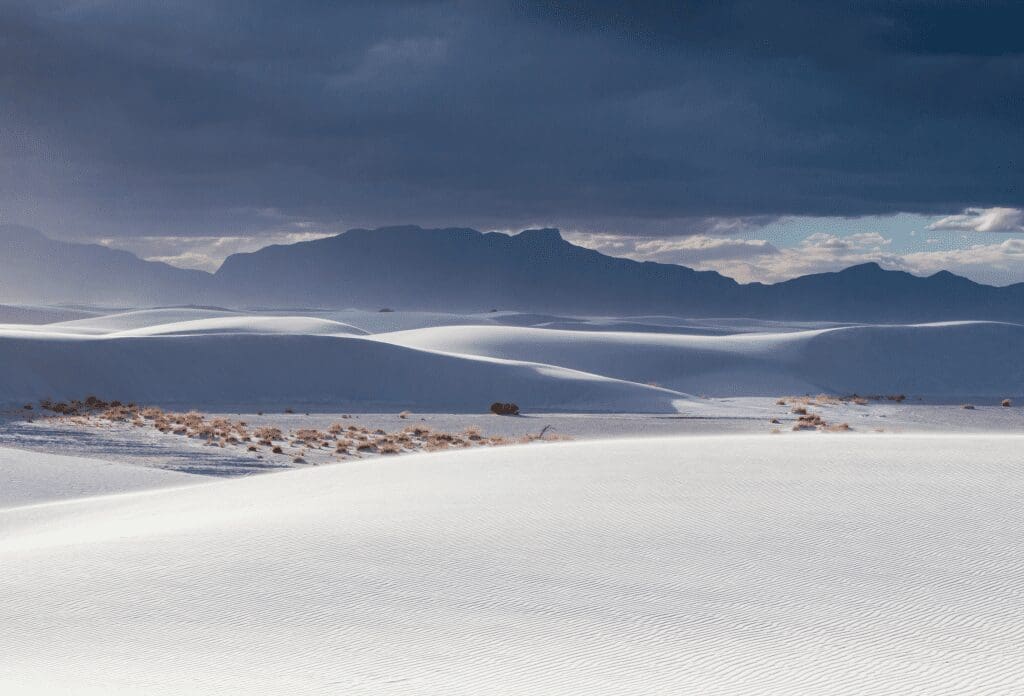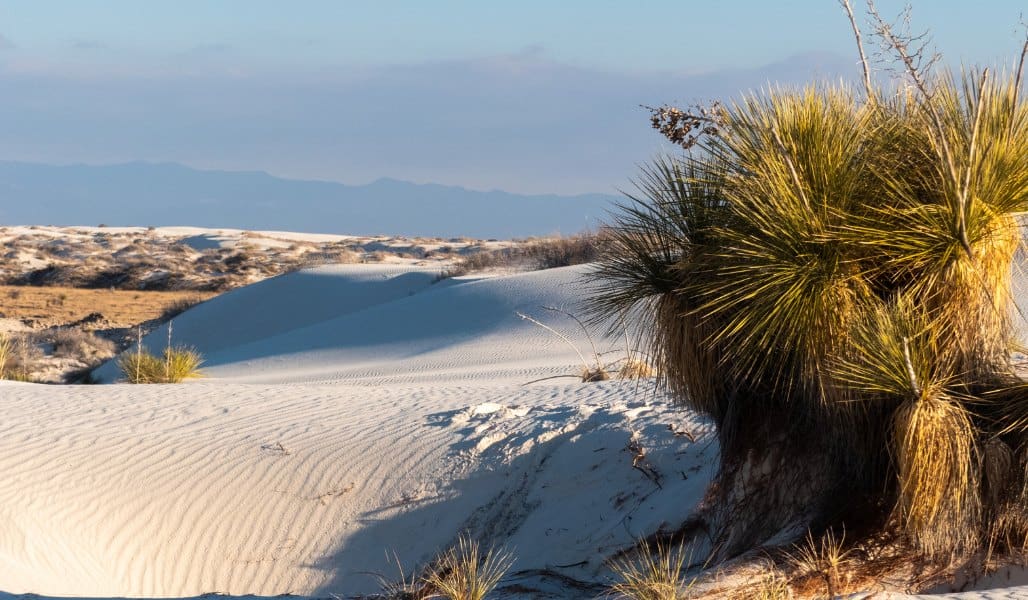
WHITE SANDS
New Mexico
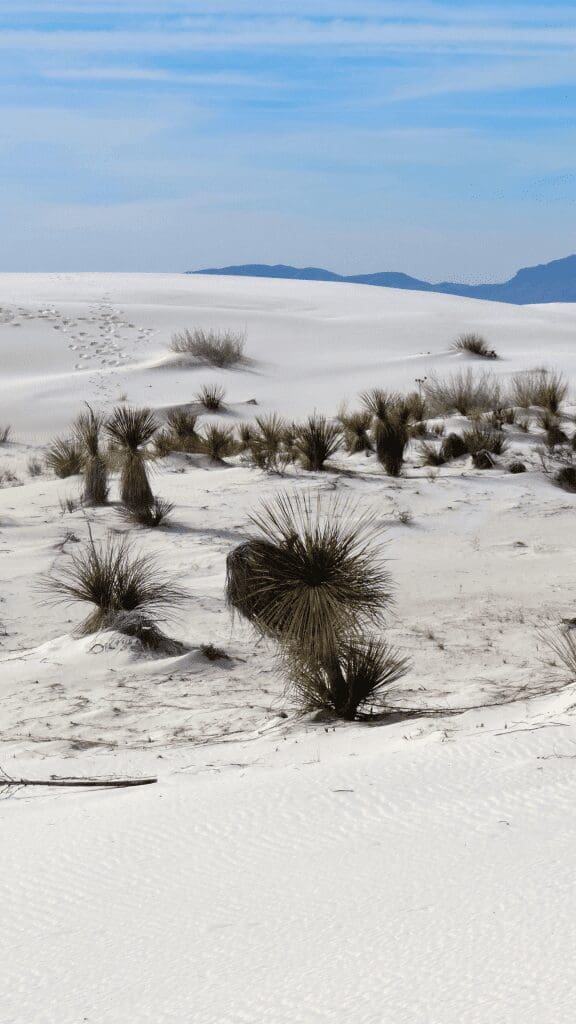

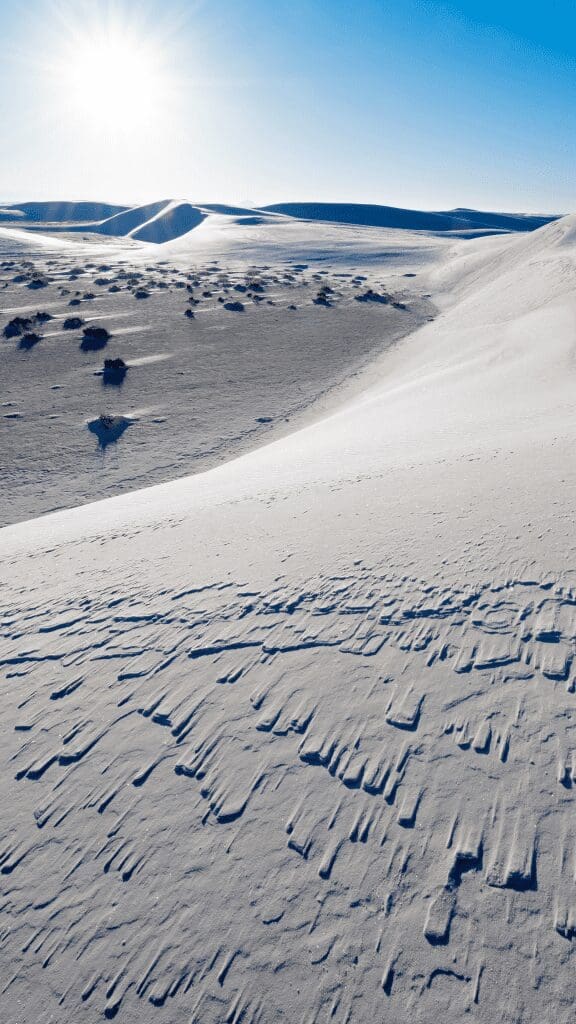
Footprints on the sands of time are not made by sitting down.
Proverb
About the Park
The glistening sands of White Sands National Park in the Tularosa Basin of New Mexico are like no other place on earth. The waves of gypsum sand have created the world’s largest gypsum dune field. The Park preserves this unique landscape and the plants and animals that call it home.
Live it up!
Best Things to do in the Park
- Take in a sunset. This was the highlight for us and something we will always remember.
- Head to the 8-mile long Dunes Drive, which is the only road in the park, for some beautiful views
- Go to the Visitor Center for great park information and history
- Try out sand sledding on the dunes. After renting a sled, find a large dune where others and sledding and go act like a kid again!
- Take pictures, lots of pictures. Photography is fun when you are surrounded by great shots.
Our Visit
The highlight of our visit to White Sands National Park was going to the park in the late evenings and filming sunsets going down behind the mountains. The clouds and sky were spectacular every night. This particular evening, we brought Annie, and it was an experience we will cherish forever. Oh, and the wildflowers were heavenly growing in the sand!

Overview
Year Established
2019
Size of Park
228 square miles
Annual Visitors
783,000
Interesting Fact
The “sand” at White Sands National Park is not silica like most inland sands, but is all almost pure gypsum.
Best Time to Visit White Sands NP
We have linked a great website to this button showing the weather for this location by the month. Click below to be taken to Weather-and-Climate.com.
Park Information
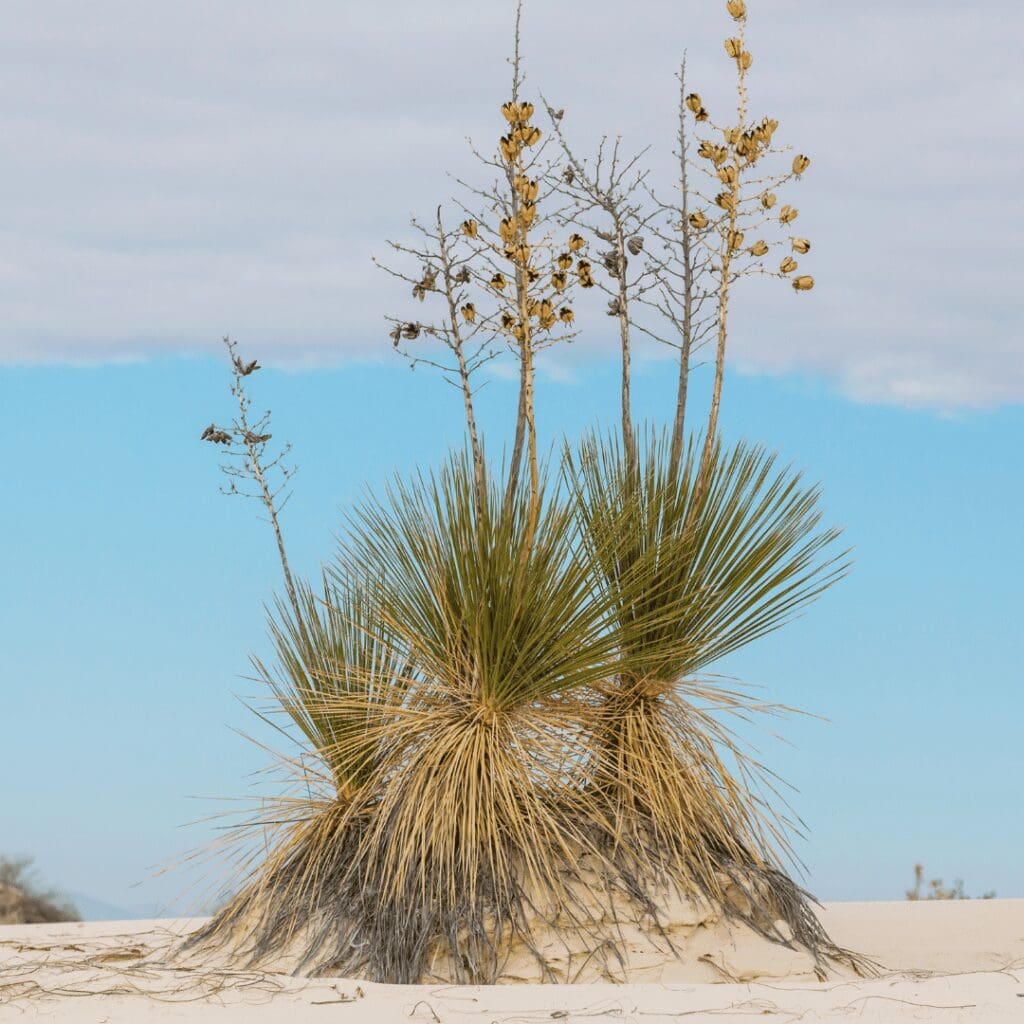
White Sands National Park is in New Mexico and covers 145,762 acres of land in the Tularosa Basin. Surrounded by White Sands Missile Range, the National Park is famous for its white dunes made up of gypsum.
The park is a popular tourist destination in the state because of its distinctive beauty. It preserves and protects the world’s largest gypsum dune field, along with the unique plants native to this region. Spread over more than 275 square miles, the dune field is so large that it can also be seen from space!
One of the popular activities in the park is sledding down on the dunes. People use waxed, plastic snow saucers for sledding, also available at the park gift shop.
Best hiking trails
There are a few hiking trails in the park that are worth checking out. These trails range from short .5-mile tracks to longer routes. Here are some of the trails you might enjoy while you are in the park.
Alkali Flat Trail
This 5-mile-long trail is the longest one in the park. The track takes you through the dry lakebed of Lake Otero, which covers 1,600 square miles of Tularosa Basin. While walking on the trail, you will have views of the endless white dunes!
This hike may be strenuous for beginners and children. Sometimes strong winds in the area may reduce visibility, so hikers should tread carefully and not get lost.
Backcountry Camping Trail
This loop trail is over 2 miles long and takes you through the heart of the dunes. The route has an orange trail marker, as the field is constantly reset due to rainstorms.
There is loose sand and several steep dunes, which is why the hike is between easy and difficult. As you walk in this classic white dune field, you will also spot several soaptree yuccas and purple sand verbena that decorate the landscape.
Dune Life Nature Trail
Located at the edge of the dune field, this trail has a distinctive beauty. Being just one mile long, the trail is also easy and family-friendly. In addition, the terrain is a blend of dunes and the Chihuahuan Desert, creating a perfect habitat for wildlife.
Some of the animals in this area include kit foxes, pallid bats, roadrunners, coyotes, and burrowing owls, most of which only come out at night. However, during the day hike, you will probably cross paths with lizards, including the little white whiptail, bleached earless, and fence lizards.
Interdune Boardwalk
This elevated boardwalk is also wheelchair accessible and is less than a mile long. The track is found between the Chihuahuan Desert shrublands and the dunes. With skunkbush sumac growing in every direction, the landscape appears even whiter than it is.
Along with benches, signs have been installed alongside the trail to lead the tours through various plants found here. Finally, the track ends at a point from where you can see the Sacramento Mountains.
Playa Trail
This short trail is appropriate for a family hike and can be finished in 20 to 30 minutes. In addition, there are interpretive panels located along the track for tourists. While this area is a dry lakebed for most of the year, during monsoon, rains fill up the playa with water, creating an exciting ecosystem.
Camping in the Park
There are no RV/vehicle campgrounds in the park; just basic backcountry camping is allowed. The ten basic backcountry camping sites in the park are located along the Backcountry Camping Loop Trail and are available on a first-come, first-served basis. Moreover, camping here also requires a permit and reservations.
Camping options near the park
As the park does not have any developed campgrounds, several private and public campgrounds and RV parks are nearby. Most of these sites are located within an hour’s drive of the park.
Aguirre Spring Recreation Area and Campground
The campground is 40 miles from the White Sands National Park and has 55 camping sites. The campground also has 2 group sites that can be reserved, while the other sites can be booked on a first-come, first-served basis. The recommended RV length here is 23 feet, while all sites have a picnic table, shade shelter, grill, and tent pad.
Sleepy Grass Campground
Located 37 miles from the national park, the campground has 53 sites and is open during summer. Campsites do not require any reservation and have a first-come, first-serve policy. RVs under 30 feet are allowed in the RV camps, while potable water and restrooms are available on the campsites.
Greasewood Campground
Sleepy Grass Campground is 62 miles from the national park and has 14 tent and RV campsites. With potable water and picnic tables, the campground also offers a variety of activities where campers can walk in a cactus garden and even catch fish for lunch.
Best Viewpoints
Lake Lucero
The beautiful Lake Lucero lies in the southwest corner of the Alkali Flat and is also the birthplace of the gypsum dunes. Lake Lucero changed from a lake to a playa almost 12,000 years ago after the ice age. Today, this area is a dry lakebed that only temporarily fills up with water during a specific time of the year.
Once filled with water, Lake Lucero looks striking in the middle of white sand, while San Andres Mountains provide a stunning backdrop. Tour to this lake is offered once a month from November through March, where tourists can learn more about the formation of the white sands.
Dunes Drive
Dunes drive is the only road in White Sands National Park and runs from the entrance right into the heart of the dune field. A drive through this road will allow you to see trailheads, picnic areas, and sledding spots. The first 5 miles of this 8-mile-long road are paved, but the last 3 miles are a hard-packed gypsum sand road.
The road is covered with white sand, which makes it look like it’s covered with snow. A drive through this road is a great way to start your trip as it allows you to explore what this park offers.
The drive isn’t any longer than 20 minutes, but you will likely have to stop at least once or twice to take photos or check off other items on this to-do list.
Dune Life Nature Trail
Dune Life Nature Trail is a 1.1-mile loop trail that allows you to hike up and over the white sandy dunes. This trail gets its name because of its diverse plant life and is one of the park’s most famous attractions. The trail also has numerous signs that will teach you about the plants and animals in this basin.
State Information
Click on the button to explore the state and travel guides for the area.
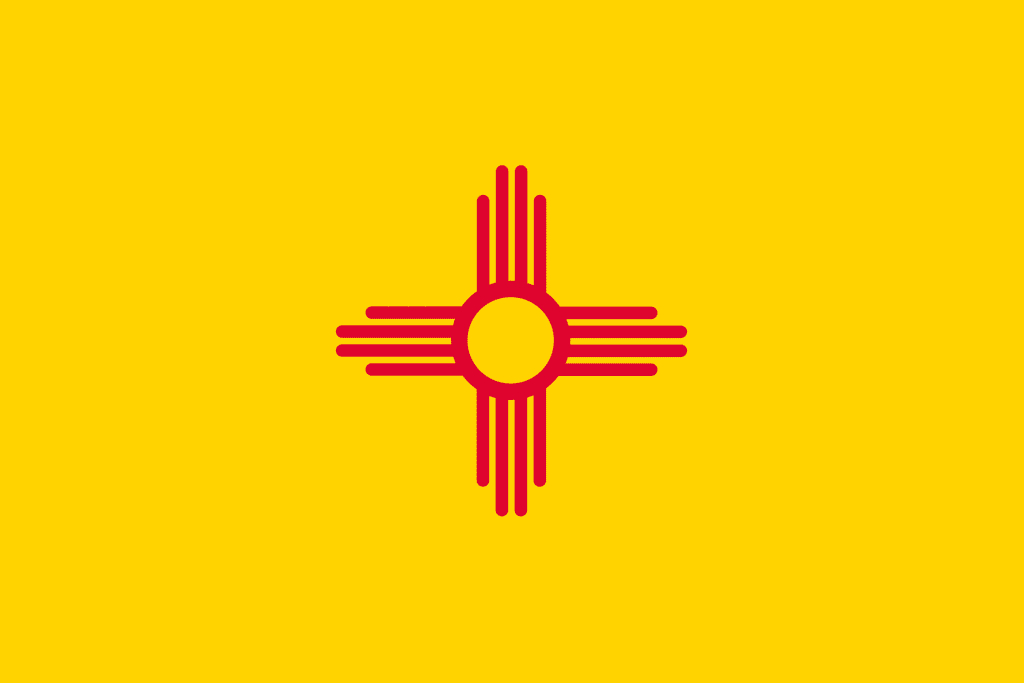
Getting to the Park
The closest airport to White Sands National Park in New Mexico is in El Paso, Texas, which is 85 miles away. Alamogordo, New Mexico, is located 15 miles from the park entrance and is the best place to stay for your visit.
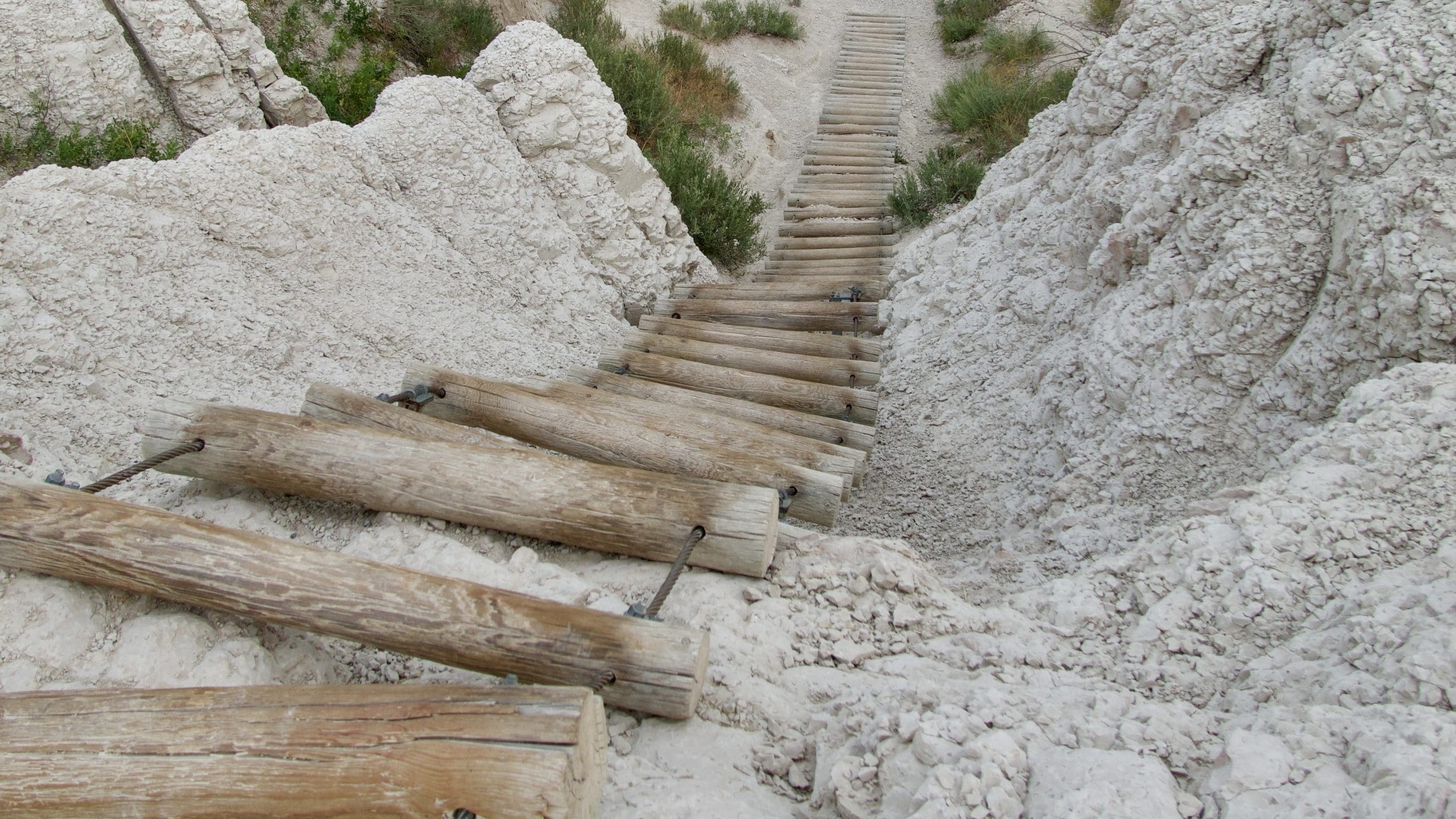
Explore another National Park in the USA
We’ve visited 51 of the 63 parks. Check out our other guides.
